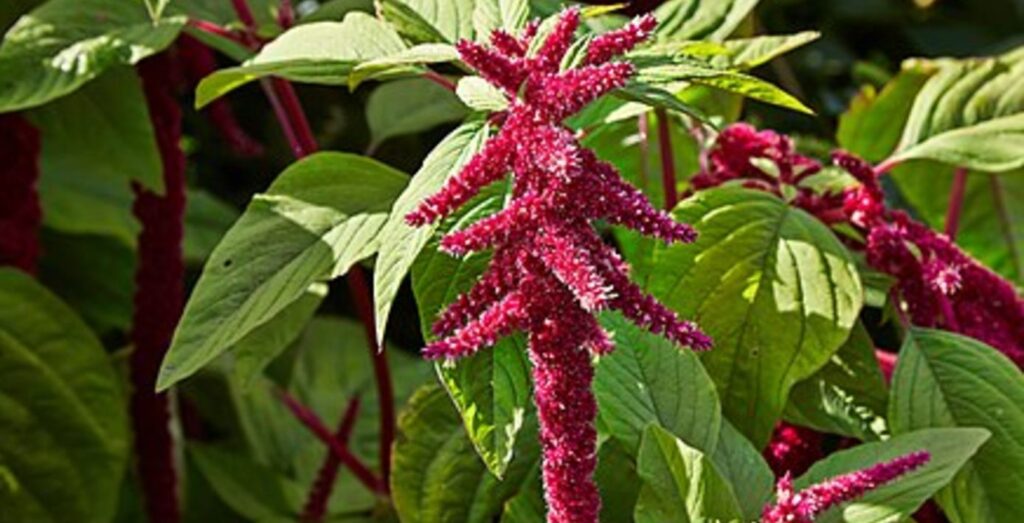“Nutritious ancestral plant of the Mayans, its flowers a treasure, a small but
powerful grain; eat the leaf and the grain, which is ideal for roasting and making
popcorn.”

This brief description, on a website translated from Spanish, belittles the grand potential and grander history of a humble but potential superfood that could replace nutrient-deficient grains across the developing world.
The first growers of the grain called amaranth were the always ahead-of-their-time Mayan peoples of Central and South America. It was also cultivated by the Aztecs.
When Spanish conquerors arrived in the 1600s, they threatened anyone seen growing amaranth, because the spiritual connection they had to the plant was thought to undermine Christianity, according to a recent article in The Guardian. Now free from such persecution, the ancestors of Mesoamerican peoples across Latin America are bringing this once-common crop to the attention of the world’s markets.
A source of all nine essential amino acids, as well as several key minerals like iron and magnesium, amaranth is a pseudo-cereal, lying somewhere between a seed and grain, like buckwheat or quinoa—and, it does not contain gluten.
Additionally, it’s now being grown and marketed in high-end products for the beauty industry, in essential oils, and health food stores, in far-flung places like South Asia, China, India, West Africa, and the Caribbean.
With nearly 75 species in the Amaranthus genus, some amaranth species are cultivated as leaf vegetables, some for grain, and some for ornamental plants that you may have planted in your garden.
Densely packed flower clusters and stems grow in a range of striking pigments, from maroon and crimson to ochre and lime, and can grow from 3 to 8 feet tall. Some of them are summer annual weeds, commonly referred to as pigweeds.
Amaranth explosion
The total value, since the 1970s when amaranth first began appearing on the shelves of stores, has ballooned into a global trade that’s now valued at $5.8 billion.
And, one Pueblo woman from New Mexico thinks it has the potential to feed the entire world.
Much of the revival of traditional amaranth cultivation methods, which involve saving the seeds of the best plants, similar to corn cultivation by Mexico’s campesinos, have created a seriously-resilient crop. A 2010 article from the New York Times detailing the rise of weeds resistant to the Monsanto herbicide “Roundup,” explained that amaranth, considered a weed by some, displayed such resistance.

Organizations like Qachoo Aluum in Guatemala, a Mayan word for Mother Earth, sell these ancient grains/seeds on their website, and host workshops to help indigenous communities regain food security through ancestral methods of cultivation.
Regain is a key word here because, as The Guardian article details, government forces had been persecuting the Mayan population and burning their fields. Farmers kept amaranth seeds in secret jars buried underground, and when the two-decade war ended, the remaining agriculturalists began to spread the seed, and the growing methods, across the countryside.
RELATED: Date Seeds Unearthed From the Time of Jesus Are Revived, Adding Fruit to Jewish, Arab Unity
Qachoo Aluum rose from the ashes of this conflict, thanks to more than 400 families from 24 Guatemalan villages, who have been traveling every year to the United States to share their ancestral knowledge about the crop to predominantly indigenous and Latin-language garden centers.
“Amaranth has completely changed the lives of families in our communities, not only economically, but spiritually,” said Maria Aurelia Xitumul, a Mayan descendent and member of the Qachoo Aluum community since 2006.
The interchange of seeds—a vital part of healthy ag systems, has revived friendly connections between the Guatemalan Qachoo Aluum and their New Mexican Pueblo relatives.
“We’ve always viewed our seed relatives as relatives and kin,” said Tsosie-Peña, who believes the resilient, nutritious plant can feed the world.
A perfect plant for drought-prone regions, amaranth has the potential to improve nutrition, boost food security, foster rural development, and support sustainable land care.
GROW This Nutritional Good News By Sharing it on Social Media…




















